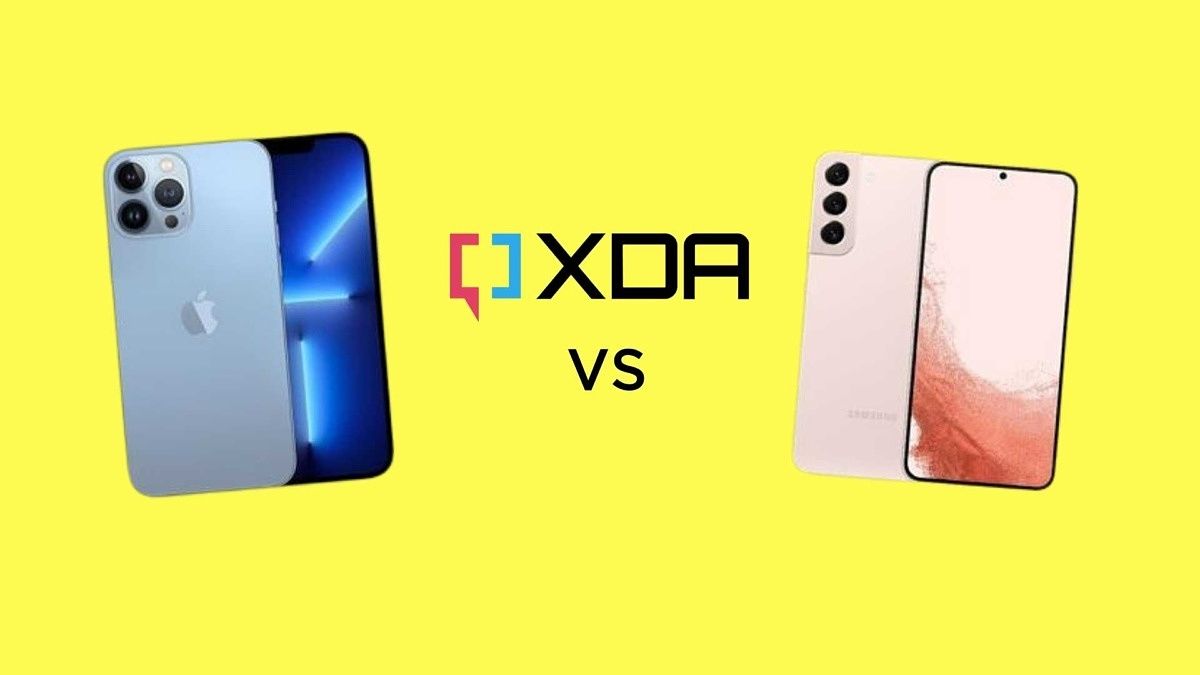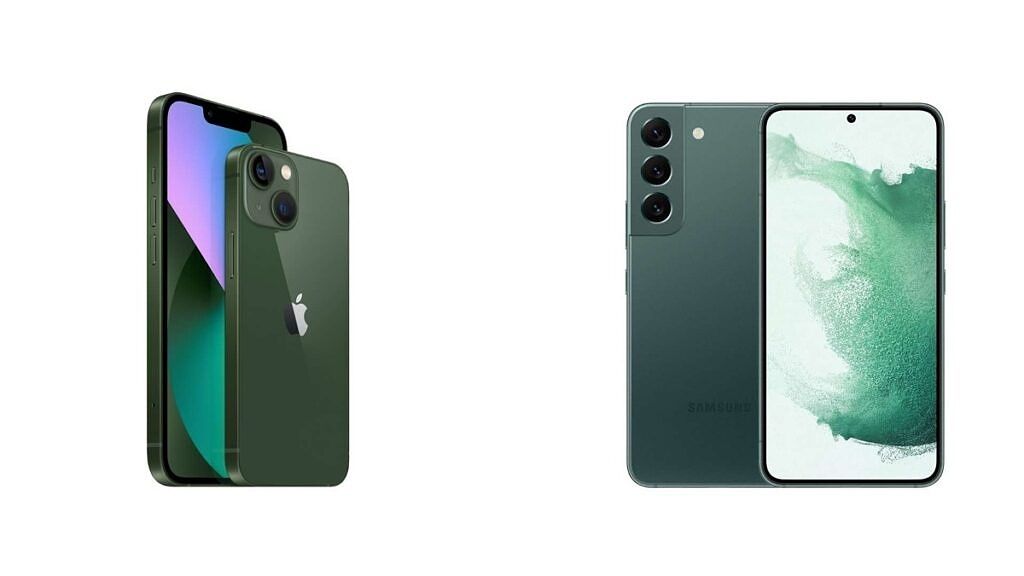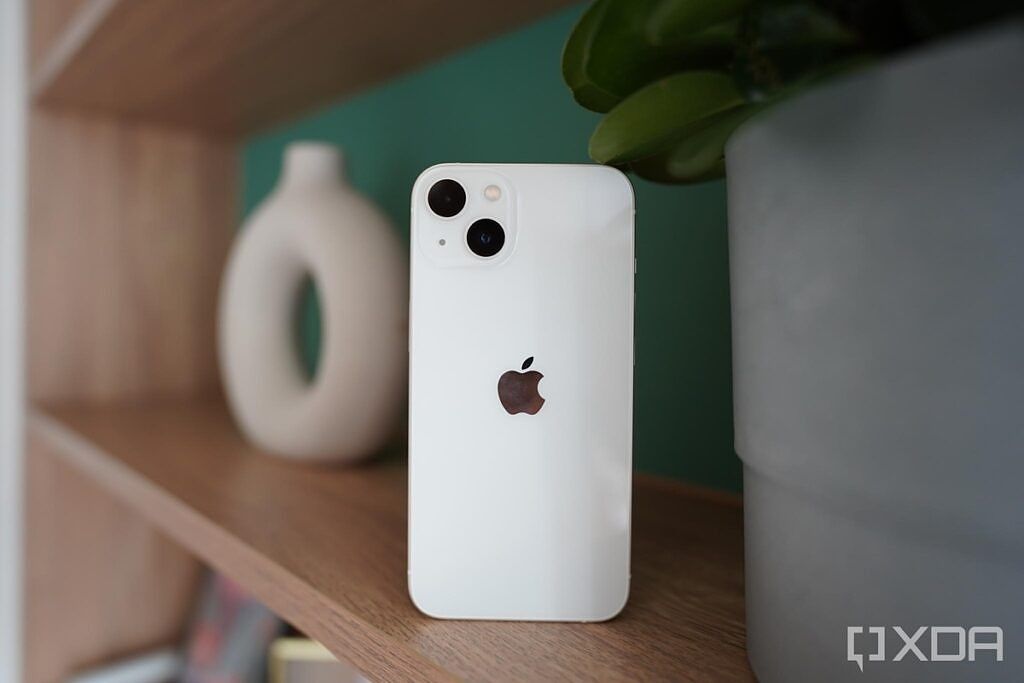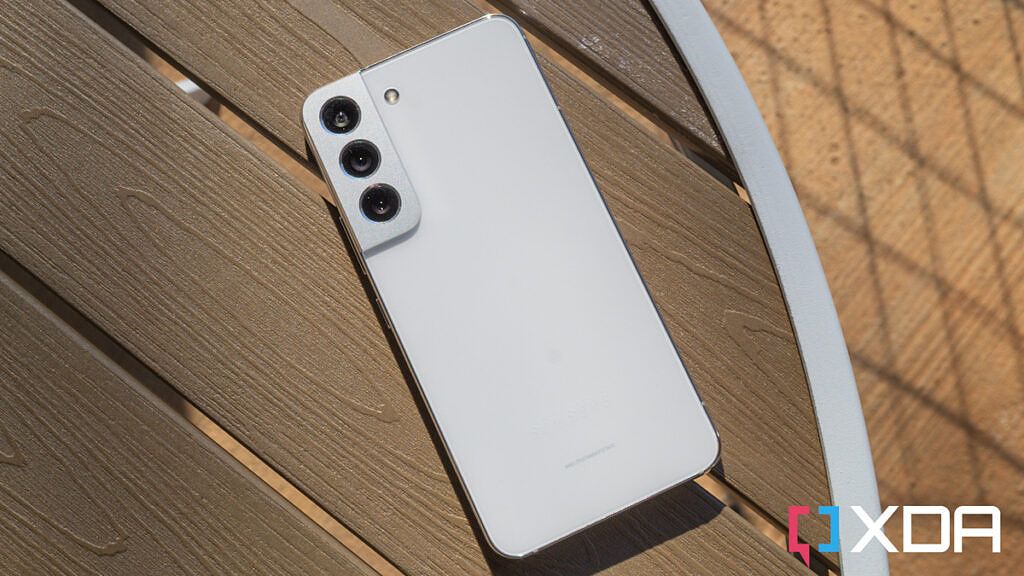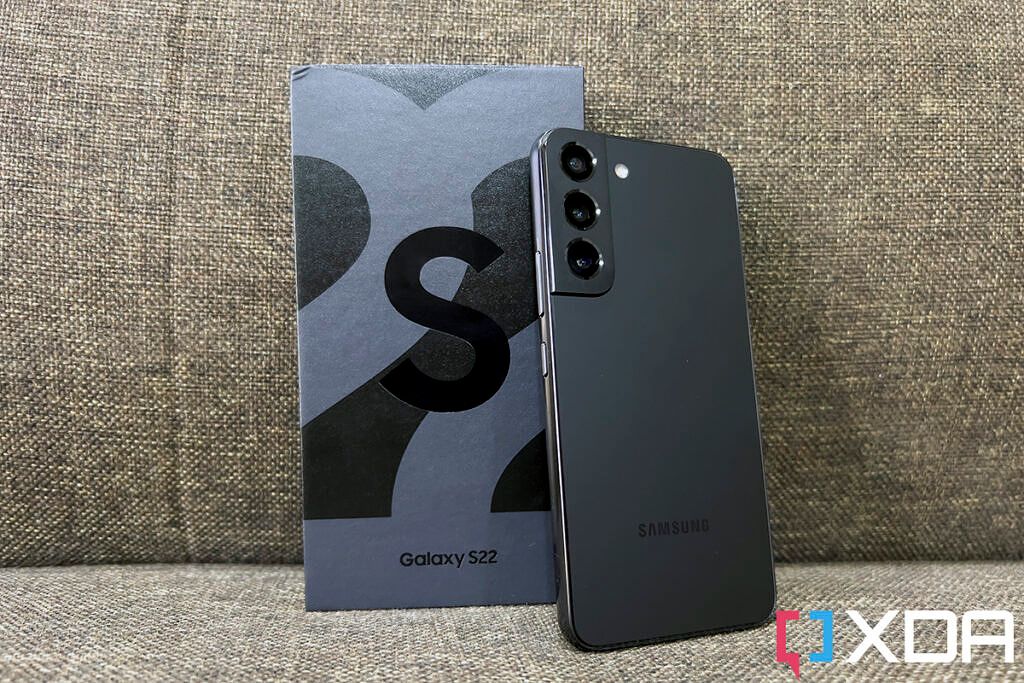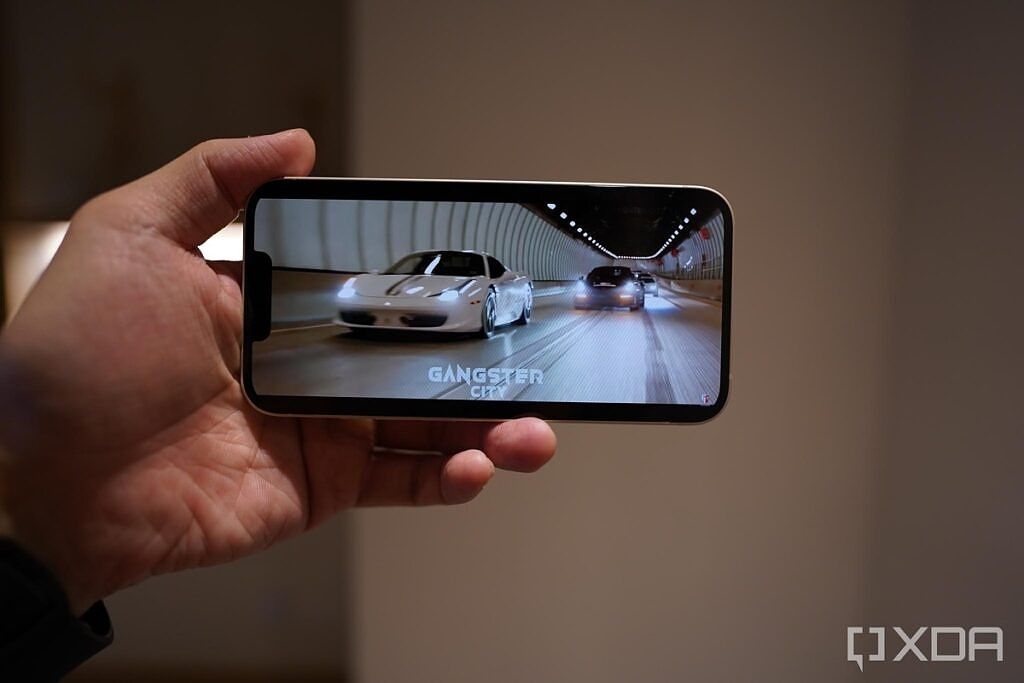Samsung's Galaxy S22 and Apple's iPhone 13 are aimed at two groups of consumers: those who want a "new flagship" but don't want to pay too much or consumers who don't want a huge flagship phone. With both devices priced at $699 right now and with "just" 6.1-inch screens (this is measured diagonally, so the actual height of the phones is well under 6-inches), these two easily fit the needs of those two groups.
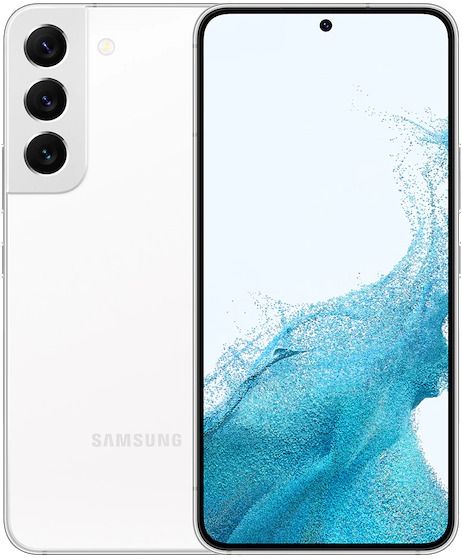
Samsung Galaxy S22
The entry level series in Samsung's 2022 flagship line, the S22 may not be ultra or even a plus, but it still brings a brilliant screen, top-end SoC, and strong camera performance across the board.
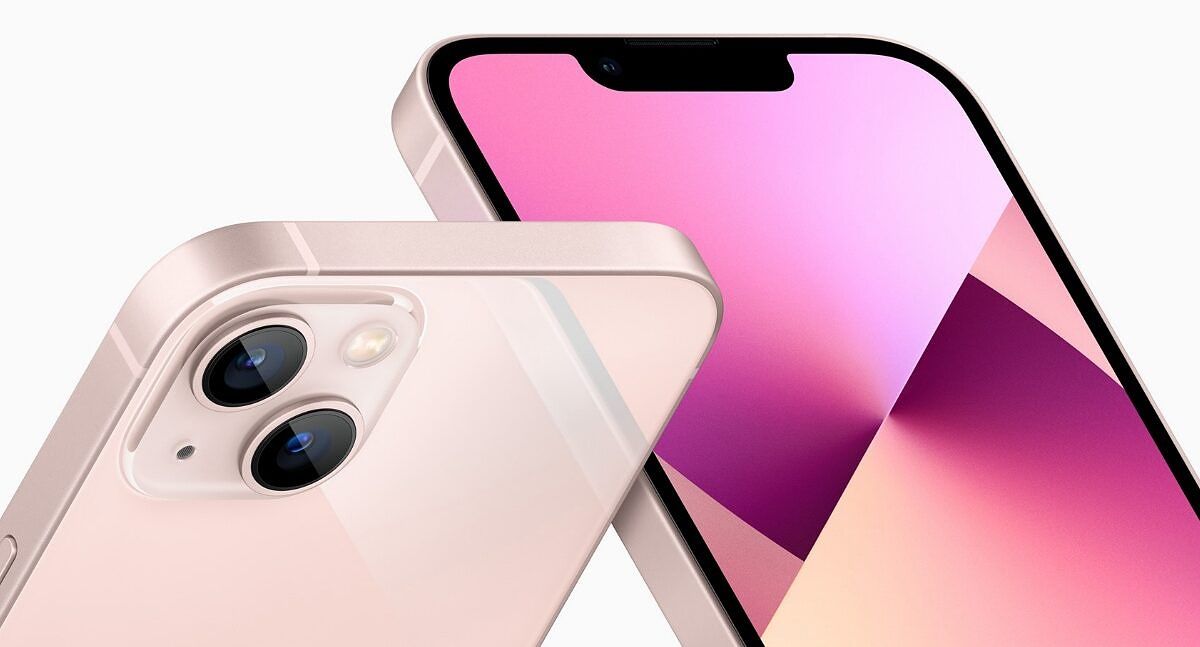
Apple iPhone 13
The Apple iPhone 13 offers the supremely powerful A15 Bionic silicon and a really good main camera in an affordable package.
Navigate this article:
Samsung Galaxy S22 vs Apple iPhone 13: Specifications
|
Specifications |
Samsung Galaxy S22 |
Apple iPhone 13 |
|---|---|---|
|
Build |
|
|
|
Dimensions & Weight |
|
|
|
Display |
|
|
|
SoC |
|
|
|
RAM & Storage |
|
|
|
Battery & Charging |
|
|
|
Security |
Ultrasonic in-display fingerprint scanner |
Face ID |
|
Rear Camera(s) |
|
|
|
Front Camera(s) |
10MP |
12MP TrueDepth camera system |
|
Port(s) |
USB-C |
Lightning |
|
Audio |
Stereo speakers |
Stereo speakers |
|
Connectivity |
|
|
|
Software |
OneUI 4.3 over Android 12 |
iOS 15 |
|
Other Features |
Dual physical SIM |
Dual physical SIM or Dual eSIM |
Samsung Galaxy S22 vs iPhone 13: Hardware and Design
Both the iPhone 13 and Galaxy S22 are glass-and-metal slab phones with premium construction, including toughened glass covering both the front and back sides and sturdy aluminum frames. Both are lightweight and easy to hold with one hand and will fit into just about any pocket.
Display
The screen sizes may be identical but the Galaxy S22 display is a tad better than the iPhone 13's screen: the Galaxy S22 display has a double the refresh rate at 120Hz refresh rate, gets slightly brighter, and has a smaller cut-out -- just a small hole punch, instead of the large notch eating into the iPhone 13's screen.
However, iOS' animations are just better optimized than Samsung's OneUI, as the iPhone 13's 60Hz somehow feels smoother than 60Hz, while Samsung's 120Hz can see occasional stutter. The Galaxy S22's animations are still ultimately more fluid moving with twice as many animations, but the gap is closer than the usual 120Hz vs 60Hz fare. The point is that enthusiasts may nitpick at the iPhone 13 display, but for most people, it remains absolutely fine.
Both screens are flat too, giving the phone a similar in-hand feel, but the iPhone's edges are a bit sharper, as Samsung has wisely added subtle chamfered edges where the display meets the aluminum frame.
Cameras
The iPhone 13 houses a dual-camera system covering the wide and ultra-wide focal range, while the Galaxy S22 one-ups Apple by using a triple-lens array that covers the wide, ultra-wide, and telephoto range. Because the iPhone 13 doesn't have a dedicated zoom lens, any zoom beyond 3x starts to lose significant detail. Stick with 2x zoom, however, and it's still serviceable.
The Galaxy S22's 3x telephoto zoom lens, on the other hand, is excellent, particularly for a phone at this price range. The other cameras aren't shabby either, with a 50MP main camera and a 12MP ultra-wide. Samsung's main camera has a larger image sensor and benefits from pixel-binning technology compared to the iPhone 13's straightforward 12MP main camera, so low-light photos tend to benefit the Galaxy S22 too. But the iPhone 13 cameras are a bit more efficient on the software front -- there's almost no shutter delay (can't say this about the Galaxy S22), and switching between the iPhone's two lenses feels more seamless.
Still, both of these phones' main cameras are very good day and night thanks to computational photography smarts. For the ultra-wide sensor, it's a virtual tie as both are solid performers given enough lighting. The iPhone 13 is a bit better performer in video, including the ability to shoot somewhat realistic bokeh video.
SoC and Memory
The iPhone 13 is powered by Apple's A15 Bionic SoC, and while Apple doesn't publicly reveal RAM information, teardowns have revealed that the phone runs on 4GB of RAM, with storage options at 128GB, 256GB, or 512GB. The Galaxy S22 uses 8GB of RAM and comes in either 128GB or 256GB storage options, but the silicon situation is a bit complicated. In countries like the US, China, India, and a few others, the Galaxy S22 runs on Qualcomm's Snapdragon 8 Gen 1, but in many other chunks of the world including Samsung's home country of South Korea and virtually all of Europe, the phone runs on Samsung's own Exynos 2200. Most reviewers have found in their testing that the Snapdragon 8 Gen 1 is the more capable chip.
If we're going by pure processing power, the iPhone 13 wins this one regardless, as Apple's A15 Bionic beats the Snapdragon 8 Gen 1 in every benchmark test and some real-life tests too. But in real-world uses, the Snapdragon 8 Gen 1 and even Exynos 2200 are more than powerful enough to satisfy most users.
Battery and other bits
Both phones' batteries are a bit small, with Samsung's device running on a 3,700mAh cell and the iPhone on a 3,227mAh battery. Because Apple's iPhones have superior synergy between hardware and software (particularly the processor), the iPhone 13 has noticeably better battery life than the Galaxy S22 -- it doesn't help that Samsung's screen is more power-hungry. The iPhone 13 is a phone that can last a full 12-hour day for most people, but the Galaxy S22 will almost certainly need a top-up in the evening if it were to go an entire day. Neither phone comes with charging bricks, but both support wireless charging and fast wired charging, albeit the definition of "fast" remains on the conservative end.
Elsewhere, both phones pack loud stereo speakers and IP68 water and dust resistance, but the iPhone 13's haptics is noticeably superior to the Galaxy S22's haptics.
Samsung Galaxy S22 vs Apple iPhone 13: Software
Ah, the good old iOS vs Android debate. With both phones you're getting the latest software that each platform has to offer -- Android 12 for the Galaxy S22 and iOS 15 for the iPhone 13. But Samsung's Android 12 has an extra layer of Samsung software on top that can bring good and bad (mostly good).
For example, Samsung's OneUI brings useful multitasking abilities such as opening apps in resizable floating windows which is not even available in Google's pure version of Android. OneUI also brings Samsung DeX, a useful sandbox UI that lets the Galaxy S22 output a Windows-like UI to an external display. But OneUI also brings redundant apps, such as Samsung having an internet browser along with Google's own Chrome, or the many plugins a user is required to download just to pair a Samsung smartwatch.
iOS, on the other hand, is much more polished and seamless, and that's due to Apple's draconian grip over the operating system. This, too, can be both good and bad. On the plus side, iOS often runs more efficiently, with fewer instances of animation stutters or app crashes. Apple's tight control over its App Store also means iPhone apps are generally more polished than Android apps, particularly when it comes to those from smaller companies. But Apple's restrictions also means stubborn decision like not giving users the ability to run more than at a time, or the lack of a free homescreen grid.
I'm partial to Samsung's software because I multitask often, but if you're already familiar with iOS or used Apple's eco-system in the past, the iPhone 13's software will feel right at home.
Samsung Galaxy S22 vs Apple iPhone 13: General Performance
As mentioned, the iPhone 13 runs on a more powerful chip, and this can be felt when doing intensive tasks like rendering 4k videos -- it's just noticeably faster on the iPhone 13 than Galaxy S22. But outside of specific niche power user tasks like this, the Galaxy S22 will perform perfectly fine. In fact, the Galaxy S22's software can do more things -- Samsung DeX really opens up possibilities -- and thus make Samsung's phone an arguably superior work machine. Being able to open two apps at once is a huge benefit that the iPhones still frustratingly do not offer. But as a gaming or media consumption device, the Galaxy S22 is a bit better too thanks to its screen being less blemished.
Samsung Galaxy S22 vs Apple iPhone 13: Which one is for you?
I personally think the Galaxy S22 is a better standalone device -- better screen, better main camera, better productivity capabilities -- but there's no denying that the iPhone 13 Pro is surrounded by a better hardware and software ecosystem. The iOS 16 update that's coming to the iPhone 13 this fall, for example, will bring some fun new tricks. It's hard to see the Samsung Galaxy S22 gaining significant new features within months of Google announcing it at I/O.
The synergy between iPhone and Mac and iPad is also a bit better than the Galaxy S22's connectivity with other Samsung products -- although the South Korean tech giant is working hard on catching up. Ultimately, I think this showdown comes down to whether you prefer using Android or iOS, and both phones will serve you well if you either cannot or do not want to pay more than $699.

Samsung Galaxy S22
The entry level series in Samsung's 2022 flagship line, the S22 may not be ultra or even a plus, but it still brings a brilliant screen, top-end SoC, and strong camera performance across the board.

Apple iPhone 13
The Apple iPhone 13 offers the supremely powerful A15 Bionic silicon and a really good main camera in an affordable package.

